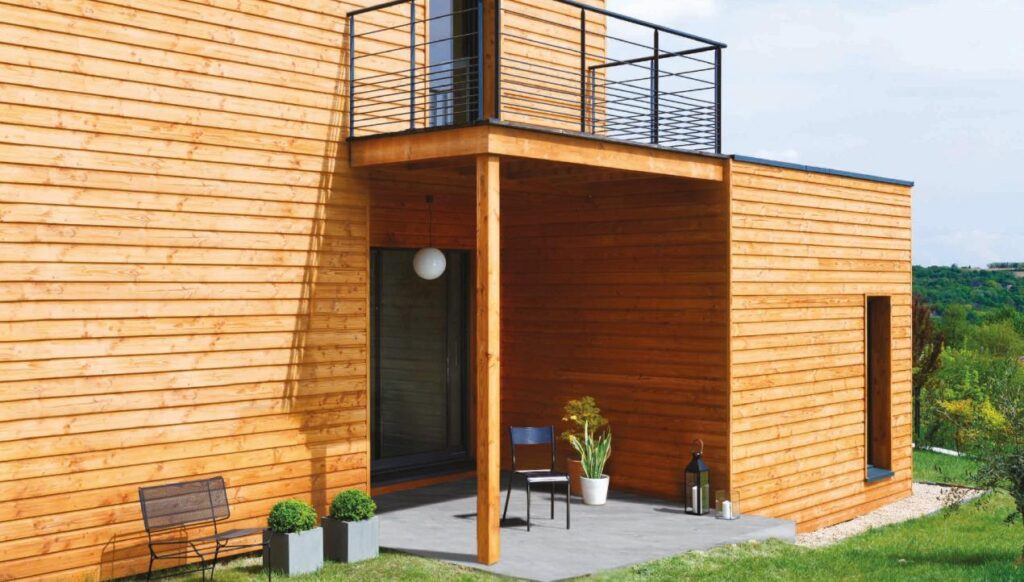Wet weather warning – how safe is your wood burner?

Met Office reports suggest that the UK could be in for its wettest summer in 100 years, with news outlets reporting the country is set for as many as 50 wet days over the next three months, the equivalent to nearly two ‘rainy days’ in every three.
The weather warning comes as estimates suggest that as many as 1.5 million homes in the UK now have a wood-burning, or biomass fuel, stove installed, with up to 200,000 new stoves being purchased each year. Popularity in wood burners has grown over the last few years, fuelled by rising energy prices and the appliances quickly becoming the ‘must have’ home renovation, luxury addition.
Bruce Allen, CEO of independent not-for-profit organisations promoting cleaner and safer choices for the use of biomass and other solid fuels and appliances, HETAS and Woodsure said: “Spring and early summer is normally the time of year that people ‘switch off’ their wood and biomass fuel stoves. However, with the Met Office warning of a wet summer the burning season which normally ends in March and April could now be extended to later in the year.
“After the long, wet winter we have just had, it’s important that people remember that stove and chimney maintenance is an essential and responsible part of ownership. While how often stoves need to be checked and maintained is circumstantial depending on manufacturer’s guidelines and how much the appliance is used, even those with very light usage should be having their appliance annually checked by an approved servicing technician and their chimney swept at least once or twice a year.”
Chimney fires in the UK have been steadily decreasing in most regions over the years. In 2022/23 there were a reported 2,540 incidents, with 40% of chimney fires taking place in the peak season, January to March. However, last year a Midlands fire brigade reported a 240 per cent increase, with the main reason for this being people ‘not bothering to have their chimneys swept’.
Allen added: “The wetter days could bring with them cooler nights and as such we expect those with wood burners installed to be using them into the summer months. It’s therefore important that owners remember to have their stoves checked and their chimney swept, keeping up with regular maintenance aids with the longevity, efficiency and safety of your appliance.”
“Also, with the wet weather it’s important that stockists and consumers continually check the moisture content of the wood they’re using. Wood fuel that is certified as ‘Ready to Burn’ ensures that the moisture content is 20% or less which reduces the impact on air quality and the environment, whilst also increasing heat output and meeting government regulations. Your firewood should be stored appropriately to ensure it does not reabsorb moisture from rainfall. However you choose to store your firewood, never stack your firewood next to your stove, chances are it might ignite.”
HETAS’ top nine tips for stove maintenance:
Rope seals
Rope seals form an airtight seal around the fire door of your stove, preventing combustion air from being drawn into the firebox. If your stove rope is faulty or degraded, the airtight seal will be compromised, causing you to have difficulty controlling your fire and burn through fuel much quicker. Many stove owners replace the rope seal themselves. It is important to ensure you wear suitably protective gloves as glass rope seals and high-temperature adhesives can irritate the skin.
Firebricks
Firebricks come in a variety of shapes, sizes, and materials, making it difficult to spot any major signs of damage. Hairline cracks (very small cracks running through the bricks) are not a cause for concern and you can continue using your stove without the need for an immediate replacement if you spot these. When your bricks start to show signs of larger cracks and begin to crumble it is crucial that you replace them.
To keep your firebricks in the best condition, avoid overfiring your stove, don’t throw fuel into the firebox, avoid forcing fuel into your stove; only load the appropriate amount, burn the suitable fuel for your stove, and use good quality, dry fuel, such as wood with the ‘Ready to Burn’ mark which helps consumers identify solid fuels that are suitable to burn at home in compliance with the new Air Quality Regulations.
Baffle plates
Your stove’s baffle (also referred to as throat plate or top plate) can buckle or burn out due to its position at the top of your stove’s firebox. If you see any signs of buckling or damage to your stove’s baffle plate, it will likely need replacing soon. The baffle plate should be cleaned in accordance with your manufacturer’s instructions – this is usually once a month but can vary across appliances.
Stove grates
As your grates and grate bars bear the brunt of the heat inside your stove, they will wear down over time. It is important to regularly inspect your stove grates and replace them when you first spot signs of warping or thinning.
Carbon monoxide alarm
Regular checks of your carbon monoxide and smoke alarms are vital for your safety. Carbon monoxide is an extremely poisonous gas that is odourless and colourless, making it difficult to detect without a functioning alarm.
Ventilation
Your stove requires ventilation for safety and efficiency. Routinely checking that ventilation in your home is not blocked is important. Correctly functioning ventilation enables your stove to burn efficiently and allows for fresh air to be circulated around the room. The ventilation your wood burner requires will depend on a number of factors, including its output and location.
Stove ash
Ashes left in your stove can be a fire or carbon monoxide hazard. Some stoves operate with a small amount of ash – ensure you check the manufacturer’s instructions to determine what is best for your stove.
Stove exterior
It is good practice to regularly clean the exterior of your stove using a lint-free cloth or a clean shoe brush, wiping away any soot or dust that has accumulated. You can also use a household vacuum cleaner with soft brush attachments to remove traces of dust or fully cooled ash. This will prevent any build-up that could damage the exterior of your stove.
Chimney sweeping
Regardless of what type of chimney you have – even if it’s lined – it will still need regular sweeping, but how often?
If you burn wood, you should have your chimney swept at least twice a year
If you burn smokeless fuels, you should have your chimney swept at least once a year
The best time to get your chimney swept is just before the heating season, or after your stove has not been used for a prolonged period of time. If you get your chimney swept twice a year, the second-best time is after the peak of the heating season.





